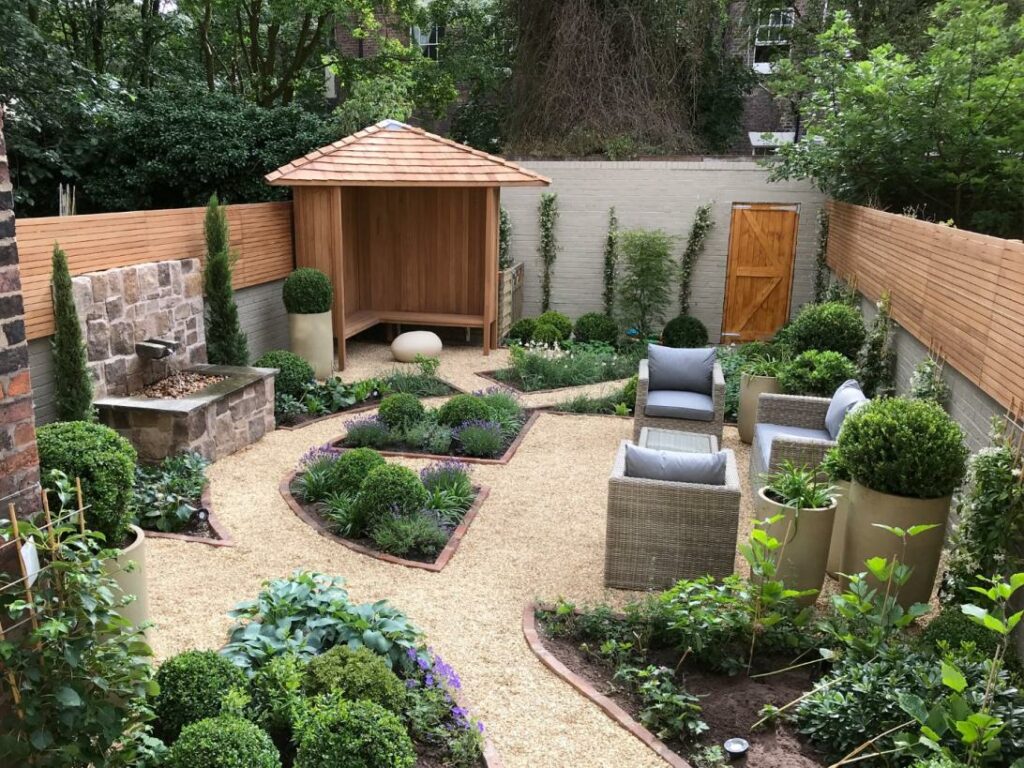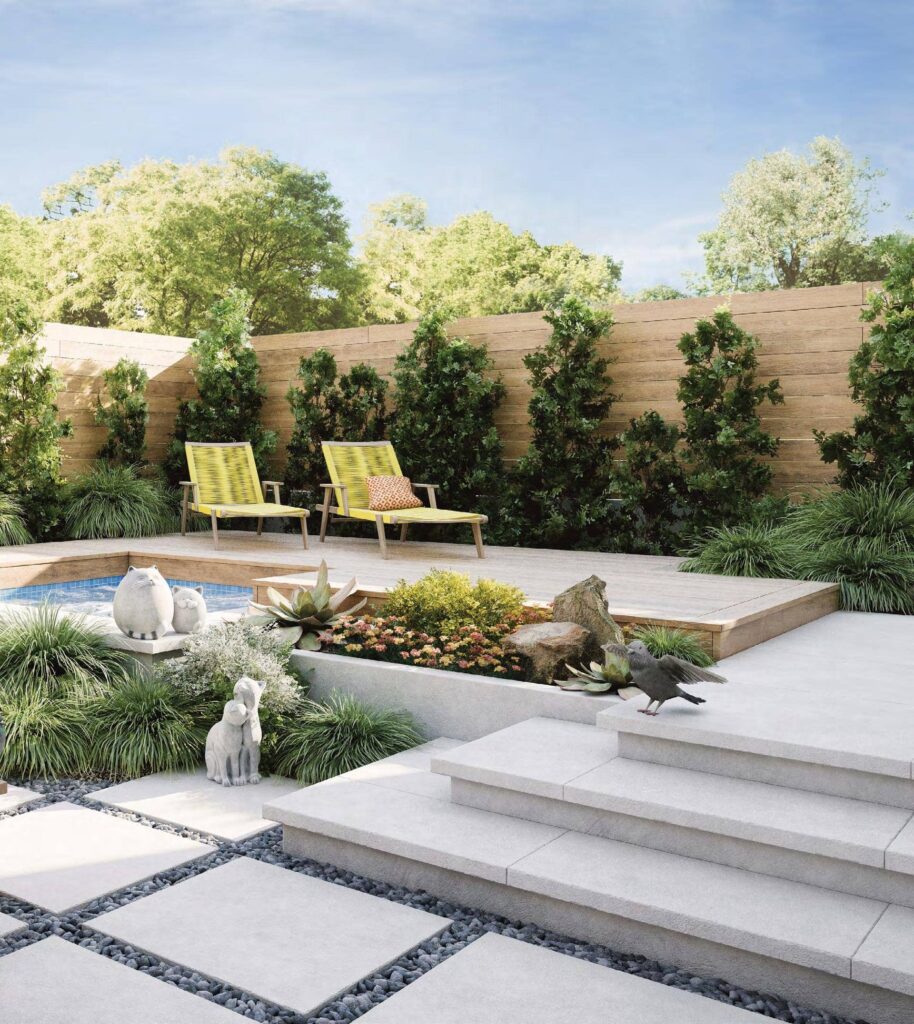Gardens are not just spaces for cultivating plants; they are profound hubs for cultivating well-being. The Psychology of Garden Design delves into the sensory and emotional impacts of outdoor spaces on human psychology. With an awareness of the nuances of colour, form, and texture, we can create gardens that are not only aesthetically pleasing but also therapeutic sanctuaries that promote mental and emotional health.
Emotional Landscaping: A Natural Boost to Mood
A garden’s layout can significantly influence mood. Curved pathways, for instance, encourage a sense of mystery and exploration, leading us on a journey through varied planting design schemes that can uplift, calm, or invigorate. Similarly, the use of water features adds a layer of tranquillity through sound and movement, which can reduce stress levels.
Colour Therapy: The Spectrum of Calm
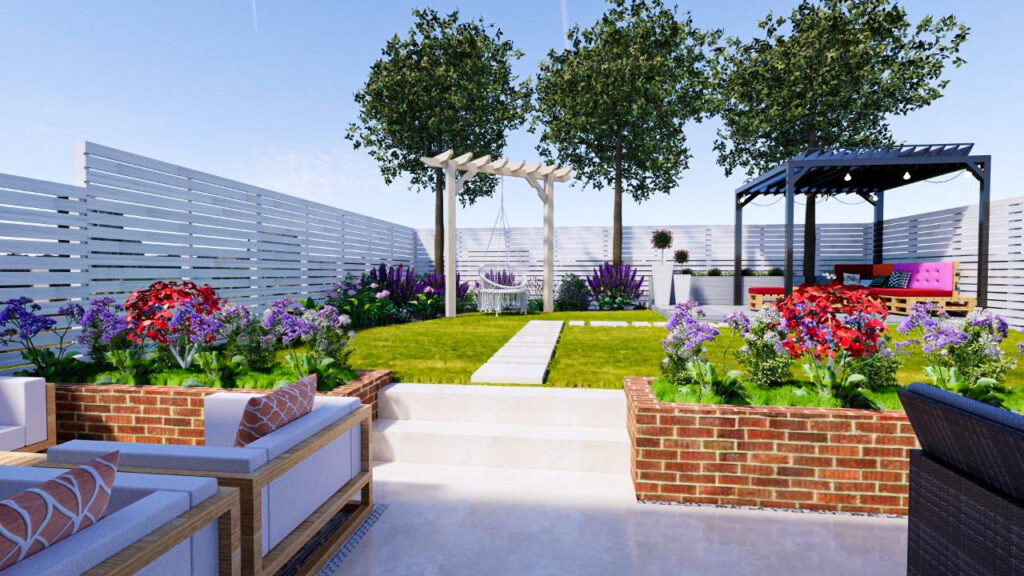
Image credit: House Designer
Colours in a garden design can have a profound effect on the mind. Green, the predominant colour in many gardens, is associated with balance and restoration. Introducing blues and purples can evoke feelings of calm and relaxation, while bright yellows and oranges can stimulate happiness and energy. By understanding colour psychology, we can create a palette that suits the emotional intent of the garden.
The Healing Touch: Textures that Soothe
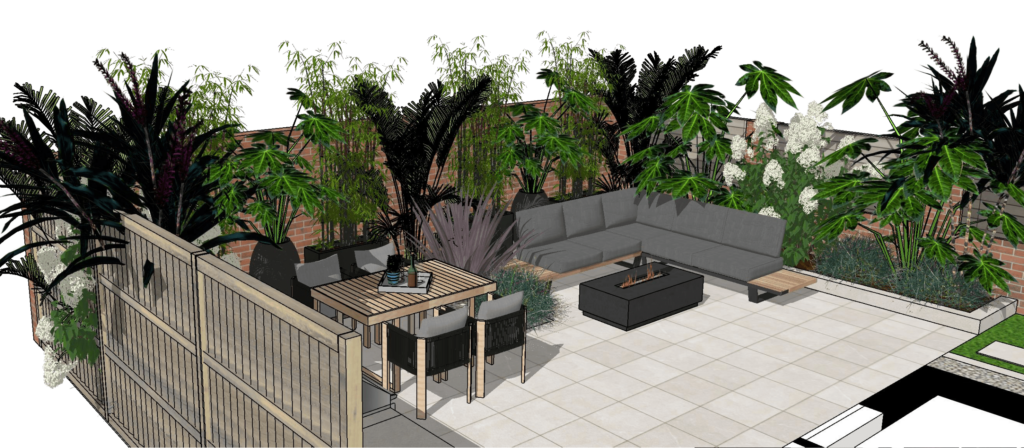
Image credit: House Designer
In garden design, texture plays a subtle yet powerful role in well-being. The juxtaposition of rough with smooth, hard with soft, invites touch and interaction, which can ground us in the present and have a calming effect. Incorporating elements like pebbles, barks, or grasses that invite touch reinforces the connection to nature and its restorative effects.
Scent-sational Spaces: Aromatherapy Outdoors
Scent is a powerful trigger for memory and emotion. A garden designed with aromatic herbs, fragrant flowers, and scented foliage can act as an open-air aromatherapy space, reducing anxiety and improving mood. Lavender, for instance, is renowned for its relaxing properties, while the freshness of mint can revitalise and invigorate the senses.
Ready to transform your garden?
Book your free consultation today and start your journey to a beautiful outdoor space.
The Sounds of Serenity: Audio Aesthetics
The acoustic environment in a garden is as important as the visual. The rustle of leaves, the chirping of birds, and the gentle trickle of water all contribute to a multi-sensory experience that can soothe the mind. Incorporating bird feeders or plants that attract wildlife adds a layer of natural sound that enhances the calming effect.
Mindful Gardening: Engaging in the Present
The act of gardening itself is an exercise in mindfulness. Engaging with the soil, plants, and the rhythms of nature can foster a sense of presence and meditation. Creating spaces for gardening activities within the design; be it planting beds or potting areas encourages interaction with the garden, enhancing its therapeutic potential.
Harmonious Habitats: The Ecosystem Effect
A well-designed garden is a balanced ecosystem that supports not just human life but also local fauna. Encouraging biodiversity through the choice of native plants and habitats can instill a sense of stewardship and connection to the larger web of life, promoting a feeling of harmony and well-being.
Designing Gardens for Wellbeing
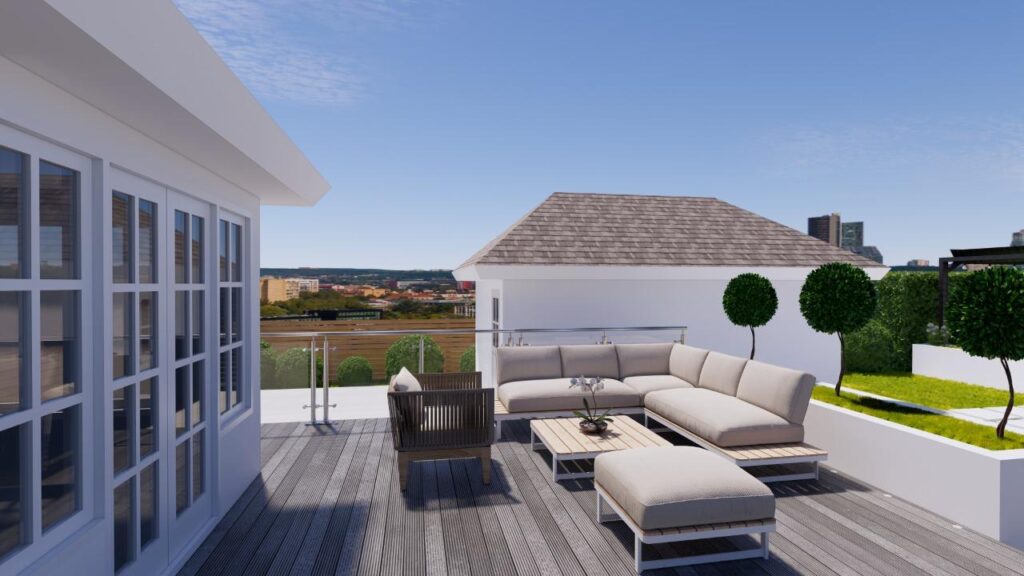
Image credit: House Designer
The psychology of garden design is a testament to the profound interconnection between our external environment and our internal states. By creating outdoor spaces with an understanding of their psychological impact, we cultivate not just plants but our well-being. It’s time to step into the garden and into a space of balance, tranquillity, and joy.
A garden can truly be a therapeutic oasis, a quiet nook in the hustle of life where one can reconnect with themselves and nature. As we unravel the tapestry of garden design through a psychological lens, we realise that every plant, path, and pebble is a step towards wellbeing.
Whether you’re designing a garden from scratch or looking to infuse elements of tranquillity into your existing space, the principles of mindful design can guide you to create a nurturing haven.



